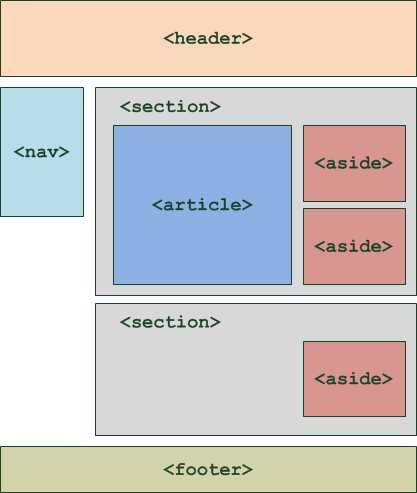Everyone has at least one idea for the next big thing. What makes startup founders different is their willingness to take action to make one of those ideas a reality.
If you're thinking you may want to leave your day job and set out as a founder, it might be helpful to reflect and make a plan but, once you've made up your mind, you need to go — and quick.
A big part of execution is simply getting started, but once you've got the ball rolling it's helpful to have a checklist of steps to follow to make sure everything is in order.
1. Do your market research
Conducting market research is the first step to determine if you really do have an idea worth pursuing. Begin your research by writing down what you think the problem is that your business idea would be solving. Physically write it down and keep it in front of you.
Figure out how many people are having this problem that you're solving and go talk to them. Consider writing up a survey for these potential "customers" to take and see what they have to say. After you get your results, check out the competition and figure out if you are different enough (in a good way) to do battle with them.
Keep all of your research materials when you are finished, as they could be helpful in securing funding later on.
2. Secure intellectual property
Intellectual property (IP) refers to the process by which an individual or company can own the rights to a created product. Examples include patents, copyright, and trademarks. It is vital to the success of your company that you follow the proper protocol to protect your differentiating factor.
By securing your IP early on, you'll protect yourself against copycats. Conversely, make sure you're not the copycat, even inadvertently. Confirm that you aren't violating any existing IP rights or non-compete agreements, otherwise, you could face serious legal ramifications. Once you know you're in the clear, file your patent or apply for your trademark or copyright.
Pro tip: Once you have command of the IP, transfer it to the ownership of the company once it is incorporated.
3. Decide on branding
Branding is about more than just choosing a name, it's about deciding on an identity for your idea. You want to choose something you love, but you also want to choose a name that conveys the experience of using your product and the problem that it solves.
Be aware of any existing product successes, or failures, that are associated with the name you choose and how they may impact adoption. This is the time you should also secure your website domain name and other associated marketing materials. This is also where you craft and internalize your elevator pitch, so you know exactly what to say to anyone who may ask what your company does.
4. Incorporate
Incorporating is a big deal for a startup because there are so many aspects of the startup lifecycle that affect it, and are affected by it. Incorporating is the process of turning your business into a legal entity and deciding how it will be structured. Typically, startups will be incorporated as an LLC, a C corporation, or an S corporation. Both LLCs and S corporations have special tax exemptions, while a C corporation is considered a taxable entity.
In addition to the tax differences, there are a host of other considerations that you need to make when incorporating. For example, equity compensation, which is a major issue when raising capital, is different depending on the business structure you choose. Additionally, you'll want to consider where to incorporate, as different states have different ways of taxing businesses.
One of the de facto standards is to incorporate as a Delaware-based Corporation because Delaware is considered by many to have favorable corporate law practices, and because C corporations tend to be looked upon more favorably by venture capital investors.
5. Choose a co-founder
Not having the proper support for even the best of ideas can kill your execution. In fact, some investors look at the founding team first before looking at the idea when considering making an investment. If you have a co-founder already — awesome. If not, you should consider bringing someone else into the fold.
Look for someone with solid track record who you have, at least, some history with. The key feature is finding someone with a skill set that is complementary to yours. Style and personality are also considerations to make, as you will be working alongside this person every day and need to know that you can accomplish goals as a team. Also, there might only be room for one person in the spotlight, so understand that one of you might be working behind the scenes and will need to be ok with that.
6. Write a business plan
One way to set your startup off on the right path is to write a good business plan. Using the market research you did earlier, create your plan of attack and decide what you want to accomplish with your new business. Determine goals and milestones, and what steps you need to make it to those milestones.
7. Pick a workplace
Where you work actually does have an effect on your startup as you're getting off the ground. Different environments will suit different working styles best. Many founders choose to work from home initially to save money, but others choose to rent at a coworking space, share an office, or rent and office for themselves. Don't be afraid to experiment, but don't let the search for the perfect space get in the way of your work.
8. Find a mentor
Mentorship is a touchy subject. First, you should determine if having a mentor is good for you as a founder. If so, finding the right mentor can make a huge difference. Even with the combined expertise of you and your co-founder, a mentor can provide deep industry insight and wisdom to help you navigate some of the challenges that come your way.
9. Apply for an accelerator program
If you need some additional resources and expertise, consider applying for an accelerator. An accelerator is a program for startup businesses that helps speed the growth of the company by providing a mentor network and sometimes a small investment. These programs can also give their companies the opportunity to formally pitch the media and other members of the startup community during a demonstration day at the end of the program. Bear in mind, however, that most of these programs require equity share of your company.
10. Raise capital
For many startups, taking it to the next level requires a financial investment in the company. Founders give equity in their company to angel investors or venture capital investors in return for money and, sometimes, advice. The resources can be an enormous help, but taking capital investments does have a dark side that should be understood before you move forward.
If you need to raise capital for your business, you should begin by deciding how much money to raise and how it will affect your startup. Once you have that figured out, you should decide how you'll be raising it — by crowdfunding, from an angel investor, or through a traditional VC firm. Then, you need to practice your pitch.
This list is not exhaustive, and the complete set of steps you'll take will likely be determined by your individual situation. However, these steps should help get you started and on your way to a public launch.




 The first example of Data Mining and Business Intelligence comes from service providers in the mobile phone and utilities industries. Mobile phone and utilities companies use Data Mining and Business Intelligence to predict ‘churn’, the terms they use for when a customer leaves their company to get their phone/gas/broadband from another provider. They collate billing information, customer services interactions, website visits and other metrics to give each customer a probability score, then target offers and incentives to customers whom they perceive to be at a higher risk of churning.
The first example of Data Mining and Business Intelligence comes from service providers in the mobile phone and utilities industries. Mobile phone and utilities companies use Data Mining and Business Intelligence to predict ‘churn’, the terms they use for when a customer leaves their company to get their phone/gas/broadband from another provider. They collate billing information, customer services interactions, website visits and other metrics to give each customer a probability score, then target offers and incentives to customers whom they perceive to be at a higher risk of churning. Another example of Data Mining and Business Intelligence comes from the retail sector. Retailers segment customers into ‘Recency, Frequency, Monetary’ (RFM) groups and target marketing and promotions to those different groups. A customer who spends little but often and last did so recently will be handled differently to a customer who spent big but only once, and also some time ago. The former may receive a loyalty, upsell and cross-sell offers, whereas the latter may be offered a win-back deal, for instance.
Another example of Data Mining and Business Intelligence comes from the retail sector. Retailers segment customers into ‘Recency, Frequency, Monetary’ (RFM) groups and target marketing and promotions to those different groups. A customer who spends little but often and last did so recently will be handled differently to a customer who spent big but only once, and also some time ago. The former may receive a loyalty, upsell and cross-sell offers, whereas the latter may be offered a win-back deal, for instance. Perhaps some of the most well -known examples of Data Mining and Analytics come from E-commerce sites. Many E-commerce companies use Data Mining and Business Intelligence to offer cross-sells and up-sells through their websites. One of the most famous of these is, of course, Amazon, who use sophisticated mining techniques to drive their, ‘People who viewed that product, also liked this’ functionality.
Perhaps some of the most well -known examples of Data Mining and Analytics come from E-commerce sites. Many E-commerce companies use Data Mining and Business Intelligence to offer cross-sells and up-sells through their websites. One of the most famous of these is, of course, Amazon, who use sophisticated mining techniques to drive their, ‘People who viewed that product, also liked this’ functionality. Supermarkets provide another good example of Data Mining and Business Intelligence in action. Famously, supermarket loyalty card programmes are usually driven mostly, if not solely, by the desire to gather comprehensive data about customers for use in data mining. One notable recent example of this was with the US retailer Target. As part of its Data Mining programme, the company developed rules to predict if their shoppers were likely to be pregnant. By looking at the contents of their customers’ shopping baskets, they could spot customers who they thought were likely to be expecting and begin targeting promotions for nappies (diapers), cotton wool and so on. The prediction was so accurate that Target made the news by sending promotional coupons to families who did not yet realise (or who had not yet announced) they were pregnant!
Supermarkets provide another good example of Data Mining and Business Intelligence in action. Famously, supermarket loyalty card programmes are usually driven mostly, if not solely, by the desire to gather comprehensive data about customers for use in data mining. One notable recent example of this was with the US retailer Target. As part of its Data Mining programme, the company developed rules to predict if their shoppers were likely to be pregnant. By looking at the contents of their customers’ shopping baskets, they could spot customers who they thought were likely to be expecting and begin targeting promotions for nappies (diapers), cotton wool and so on. The prediction was so accurate that Target made the news by sending promotional coupons to families who did not yet realise (or who had not yet announced) they were pregnant! The use of Data Mining and Business Intelligence is not solely reserved for corporate applications and this is shown in our final example. Beyond corporate applications, crime prevention agencies use analytics and Data Mining to spot trends across myriads of data – helping with everything from where to deploy police manpower (where is crime most likely to happen and when?), who to search at a border crossing (based on age/type of vehicle, number/age of occupants, border crossing history) and even which intelligence to take seriously in counter-terrorism activities.
The use of Data Mining and Business Intelligence is not solely reserved for corporate applications and this is shown in our final example. Beyond corporate applications, crime prevention agencies use analytics and Data Mining to spot trends across myriads of data – helping with everything from where to deploy police manpower (where is crime most likely to happen and when?), who to search at a border crossing (based on age/type of vehicle, number/age of occupants, border crossing history) and even which intelligence to take seriously in counter-terrorism activities.









